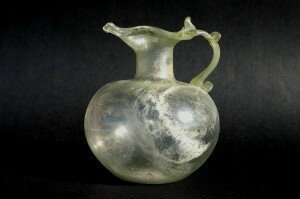When developing a detailed understanding of the process of Romanization and the character and evolution of material culture in Roman times, studies of excavated artefacts play an important role in differentiating between goods produced locally, goods produced by the city and distributed in the countryside and goods that were imported from long distances. The obtained information from material studies allows charting local, regional and supra-regional movements of goods and products, and tying the attested regional assemblages of such goods to the wider understanding of urban settlements and their territories in order to approach exchange patterns and mechanisms and the potential impact of the Roman central authority on them. Furthermore, the study of materials in context is of crucial importance in the chronometric process, for dating the structures and any diachronic research. The link of artefact studies and preservation, with the on-site museum context is evidently also important at Ammaia.
At the moment different long term artefact studies have started at the base of Ammaia. They include the study of coins, building materials and especially pottery (table wares, lamps, amphorae, cooking wares…). At the same time the laboratory for the conservation of archaeological materials is now fully operative.



